#Site Speed and Performance
Explore tagged Tumblr posts
Text
Why Your Shopify Theme Might Be Slowing You Down: 17+ Smart Tips and Speed Me Up Tricks
[et_pb_section fb_built=”1″ _builder_version=”4.27.4″ _module_preset=”default” global_colors_info=”{}”][et_pb_row _builder_version=”4.27.4″ _module_preset=”default” global_colors_info=”{}”][et_pb_column type=”4_4″ _builder_version=”4.27.4″ _module_preset=”default” global_colors_info=”{}”][et_pb_text _builder_version=”4.27.4″ _module_preset=”default” global_colors_info=”{}”] Why Your Shopify Theme…
#fast Shopify themes#improve Shopify load time#optimize Shopify theme#Shopify conversion rate#Shopify Core Web Vitals#Shopify lazy loading#Shopify load speed#Shopify minify CSS#Shopify mobile optimization#Shopify performance tips#Shopify SEO#Shopify Site Speed#Shopify speed app#Shopify speed optimization#Shopify theme bloat#Shopify theme cleanup#Shopify theme performance#Shopify theme slow#Shopify UX design#Speed Me Up BKThemes
0 notes
Text
Optimize for Success: The Best Google Core Web Vitals Services to Enhance Performance
Optimizing your site for Core Web Vitals is essential for both performance and user satisfaction. By investing in the best site speed optimization service, you can ensure that your website loads quickly, offers seamless interaction, and maintains visual stability. These improvements directly impact your rankings on Google, as the search engine prioritizes sites that offer fast, responsive experiences. Professional services can help you analyze and optimize all aspects of Core Web Vitals, ensuring your site’s performance meets and exceeds industry standards. Optimize today for long-term success and better user engagement.
#core web vitals optimization service#core web vitals audit#speed optimization services#website speed optimization service#site speed optimization service#improve website performance#improve web page performance#google site speed test#check your website speed#check your site speed#check website loading time
0 notes
Text
Site Performance Metrics Tips for 2025 Success | TweakBuzz
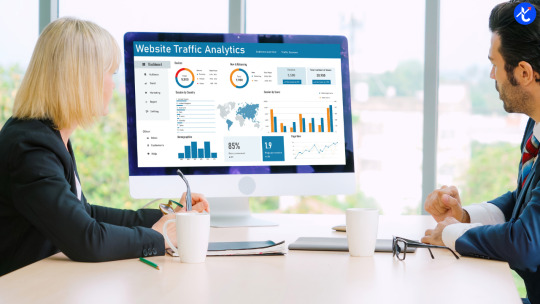
Want to level up your website in 2025? Understanding and improving your site performance metrics is the key to better rankings, smoother user experience, and higher conversions. From page load time to core web vitals, every second matters in today’s fast-paced digital world.
Start with a solid website audit checklist that covers everything—broken links, missing meta tags, outdated content, and more. This helps you spot technical SEO issues that silently hurt your rankings. Fixing these early can give your site a noticeable performance boost.
One major factor not to overlook is website speed and usability. A slow-loading or confusing website turns visitors away. Optimize your images, use proper caching, and ensure mobile responsiveness to deliver a seamless experience across all devices.
Lastly, track your progress with a Google Analytics performance report. This will help you monitor key user behaviors, bounce rates, and traffic sources, giving you actionable insights to make smarter SEO decisions. Mastering these tools and strategies in 2025 will keep your website ahead of the competition.
0 notes
Text
FREE Step-by-Step Website Audit Checklist
Your website is one of your most valuable digital assets. But as algorithms, user expectations, and technology continue to evolve, regular audits are essential to stay competitive. This 2025 website audit checklist is designed to help you thoroughly evaluate and optimize your website for SEO, security, speed, and user experience. Let’s dive in step-by-step. 1️⃣ Technical SEO Audit ✅ Check for…
#Content Audit#Core Web Vitals#digital marketing#Google Analytics#mobile optimization#On-page SEO#SEO Audit#SEO Tools#site optimization#site speed#Technical SEO#UX audit#web development#website audit 2025#website audit checklist#website checklist#website health check#Website Performance#Website Security#WordPress SEO
0 notes
Text
Top Google Core Web Vitals Optimization Services for 2025
Stay ahead of the competition with the best Google Core Web Vitals optimization services in 2025. Our experts use proven techniques to enhance your website's performance, loading speed, and visual stability. Whether you're facing CLS, LCP, or FID issues, we provide customized solutions to meet your needs. Partner with our trusted team to ensure your site exceeds Google's benchmarks and delivers an exceptional user experience. Ready to see results? Try our core web vitals consulting service and take your website performance to the next level.
#improve site performance#core web vital expert#hire core web vitals expert#tools to measure core web vitals#google website score test#google core web vitals service#core web vitals service#core web vitals consulting#core web vitals optimization service#core web vitals audit#speed optimization services#website speed optimization service#site speed optimization service#improve website performance#improve web page performance
0 notes
Text
Total Blocking Time (TBT)
Learn everything about Total Blocking Time (TBT) – a critical web performance metric. Understand how it’s measured, why it matters, how to improve it, and its impact on user experience and SEO. Total Blocking Time (TBT) | Improve Website Interactivity & Performance Understanding Total Blocking Time (TBT): A Comprehensive Guide 1. Introduction to Web Performance The web has evolved rapidly,…
#core web vitals#improve TBT#JavaScript performance#long tasks#main thread blocking#optimize JavaScript#reduce TBT#site speed optimization#TBT#TBT SEO#TBT vs FID#Total Blocking Time#web performance metrics#web vitals guide#website interactivity
0 notes
Text
Optimize Site Speed: Proven Strategies to Improve Page Load Times
In today’s digital landscape, a fast and efficient website is crucial for both user experience and search engine rankings. I’ve seen firsthand how a slow-loading page can lead to high bounce rates and lost conversions. On the other hand, a swift and responsive website can significantly improve user satisfaction and drive business success. As we navigate the complexities of web performance, it’s…
#Page Load Speed Improvement#Site Loading Time#Web Page Speed#Website Performance Optimization#Website Speed Optimization
0 notes
Text
5-Minute Website Speed Improvements Using Free Tools
Imagine clicking on a website and… waiting. And waiting. Frustrating, right? In today’s hyper-fast digital world, people bounce off slow websites quicker than a cat spotting a cucumber. The good news? You can turbocharge your site’s speed in just five minutes using completely free tools—and I’ll walk you through exactly how. Let’s make your website not just fast—but lightning fast. 5-Minute…
#free SEO tools#improve site load time#optimize website performance#quick website fixes#website speed
0 notes
Text
The Cost of a Slow Website: Speed vs. Bottom Line

We’ve all experienced it. You click a link, and the page takes just a bit too long to load. Without thinking, you hit the back button and move on. It’s not impatience—it’s expectation.
In today’s digital world, speed is no longer a nice-to-have. It’s the baseline. Whether someone is browsing from a laptop at home or tapping through links on their phone during a commute, they expect pages to load quickly—and if yours doesn’t, you could be losing that visitor before they even see what you offer.
But it’s not just about losing a single visitor. A slow website can quietly affect nearly every part of your business: fewer sales, lower form submissions, reduced time on site, higher advertising costs, and even a dip in your Google search rankings. And the impact only multiplies on mobile devices, where users are even more sensitive to lag.
The upside? Website speed is something you can control. With a few well-targeted improvements, you can dramatically change how visitors experience your site—and how well your site performs across every metric that matters.
In this article, we’ll break down why speed matters, how it affects both user behavior and business outcomes, and what steps you can take—regardless of your technical skill level—to speed things up and see results.
Key Takeaways: What Every Business Should Know About Speed
Website speed isn’t just a technical issue. It’s directly tied to how people interact with your brand online—and how much revenue your site can generate. Here are a few essentials every business should keep in mind:
A one-second delay can significantly hurt conversions Research shows that just a single second of extra load time can reduce conversions by as much as 20%. That’s often the difference between someone buying or bouncing.
Mobile users are even less forgiving Over half of mobile visitors will leave a page if it takes more than three seconds to load. And with mobile traffic dominating most industries, this isn’t a small concern—it’s a major one.
Speed plays a role in SEO, ads, and bounce rates Search engines like Google take site speed into account. A faster website doesn’t just improve rankings—it reduces ad costs and keeps users on your site longer.
Fixes are often easier than expected You don’t need to rebuild your entire website to see performance gains. Simple changes—like optimizing images or choosing better hosting—can produce measurable improvements quickly.
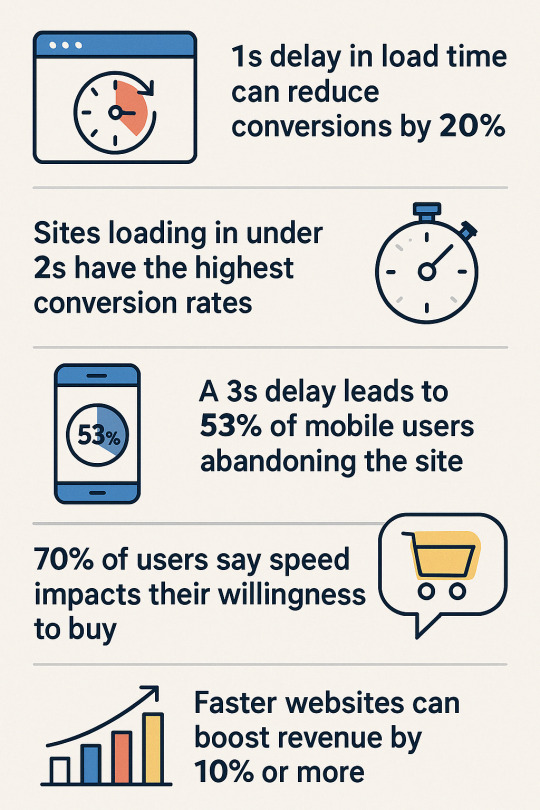
The Business Impact of Website Speed: Sales, Leads & Engagement
When a website is slow, it’s not always obvious what you're losing. There's no pop-up saying, “This visitor just gave up.” But under the surface, a slow site can quietly drain results across your entire digital strategy. Let’s look at how speed affects some of the most important business metrics.
E-commerce: More Speed, More Sales
Online shoppers expect a seamless experience. If your product pages take too long to load or your checkout is sluggish, users are far more likely to abandon their carts. In fact, speed has been shown to have a direct impact on revenue. Faster-loading sites consistently generate higher sales—especially on mobile, where attention spans are shortest.
Lead Generation: Faster Forms, More Conversions
Speed doesn’t just matter in e-commerce. If you rely on contact forms, quote requests, or email signups, the time it takes for a form page to load can make or break your conversion rate. A delay of even a second can cause hesitation or drop-off. In contrast, a snappy, responsive form flow encourages users to follow through.
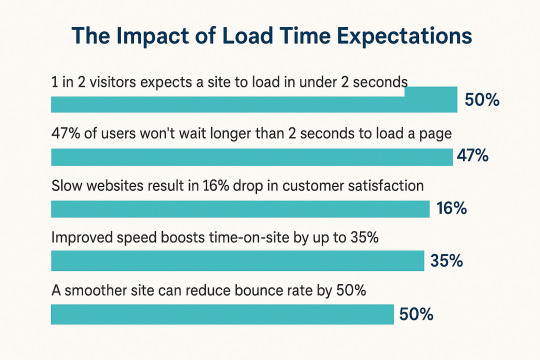
User Engagement: Time on Site and Bounce Rates
A slow website often leads to high bounce rates—when users leave your site after viewing just one page. It also reduces how much time they spend exploring your content. Speed influences how enjoyable and accessible your site feels, which directly affects how deeply people engage with your brand.
Advertising: How Speed Affects Your Ad Costs and Effectiveness
If you're running paid ads—whether on Google, Meta, or another platform—speed matters even more. Ad platforms measure your landing page experience. A slow-loading page can lower your quality score, drive up your cost per click, and ultimately reduce your return on ad spend. A faster site means a smoother journey from click to conversion.
Mobile Site Speed: Where Most Businesses Are Losing Users
It’s no secret that mobile browsing dominates today’s web traffic. For many businesses, more than half of all website visits now come from smartphones. But here’s the problem: most websites still aren’t fully optimized for mobile speed—and that gap can be costly.
Why Mobile Performance Matters More Than Ever
Mobile users are impatient. They’re often on the go, using slower connections, and less forgiving of delays. Research shows that if your site takes longer than three seconds to load on mobile, a large chunk of visitors will leave before they see a single thing.
This is where even small slowdowns—an uncompressed image, an overloaded homepage, or a poorly optimized script—can drive up bounce rates and push down conversions.
How Mobile Speed Affects User Trust
Speed isn’t just a performance issue. It’s a perception issue. A slow mobile site can feel unprofessional, unreliable, or outdated—especially when users are comparing your business to a competitor whose site loads instantly.
For service providers and local businesses, this can make the difference between gaining a customer and losing one. If your site doesn’t respond quickly on mobile, you may never get the chance to earn their trust.
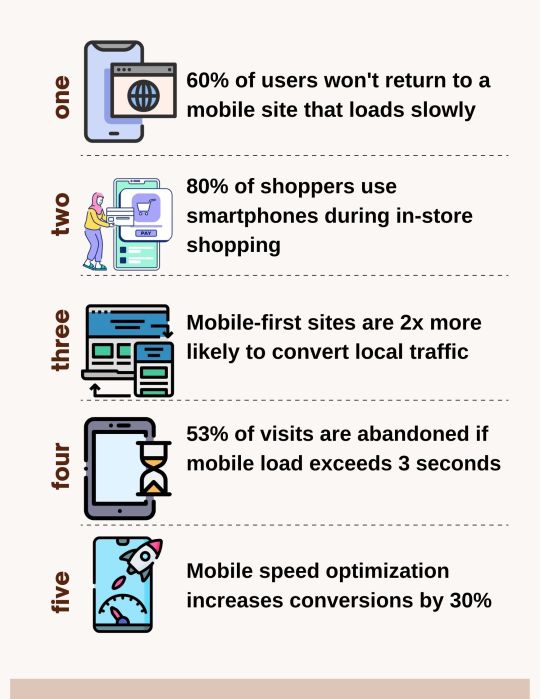
Testing and Improving Mobile Load Times
The good news? Mobile performance can be tested and improved. Tools like Google’s PageSpeed Insights and GTmetrix let you see how your site performs on mobile devices, and what’s holding it back.
From there, solutions can include compressing images, removing unnecessary animations, simplifying layouts, and minimizing the use of heavy third-party scripts. Often, it’s not about doing more—it’s about doing less, more efficiently.
SEO and Site Speed: What Google Actually Looks At
Search engine optimization (SEO) isn’t just about keywords anymore. Over the past few years, Google has made it clear: website performance, especially speed, plays a real role in how pages are ranked.
Core Web Vitals and Speed as a Ranking Signal
Google’s Core Web Vitals are a set of user-focused metrics that measure real-world experience. Among these, loading speed—how quickly a page becomes usable—is a key factor. If your site is slow to load or becomes interactive too late, it may be seen as a poor experience, and your rankings can suffer.
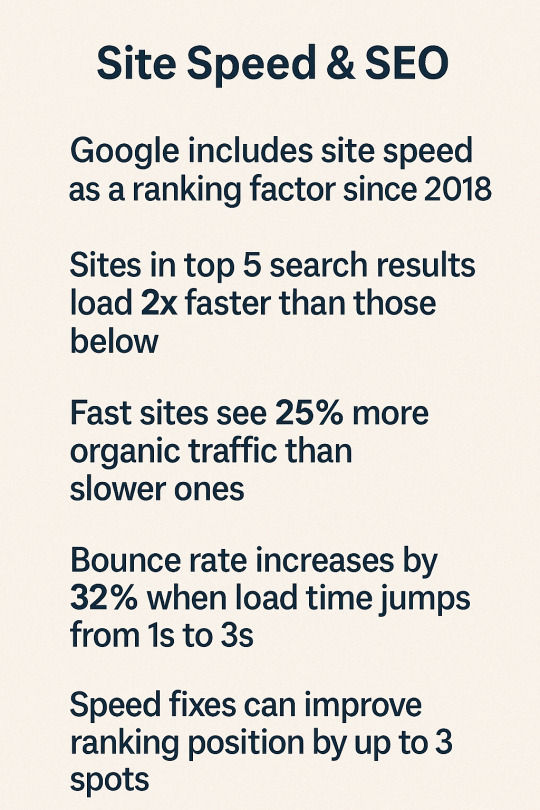
Slow Sites Drop in Visibility
Speed affects more than rankings—it affects how users behave when they arrive. If they leave quickly or don’t interact with your page, it sends signals back to Google that your content may not be satisfying search intent. Over time, these signals can reduce your visibility in search results, no matter how good your content is.
Speed Helps Click-Through Rates, Too
Fast-loading pages do better in search rankings, but they also perform better after the click. When users trust that your site will load quickly, they’re more likely to click—and less likely to bounce. That improves both your click-through rate (CTR) and the quality of traffic reaching your site.
It’s Not Just About Google, Either
While search engines measure performance, users experience it. A faster website doesn’t just help you rank—it helps you earn attention, reduce friction, and guide visitors toward taking action. That’s why speed is increasingly seen as a core SEO strategy, not just a technical afterthought.
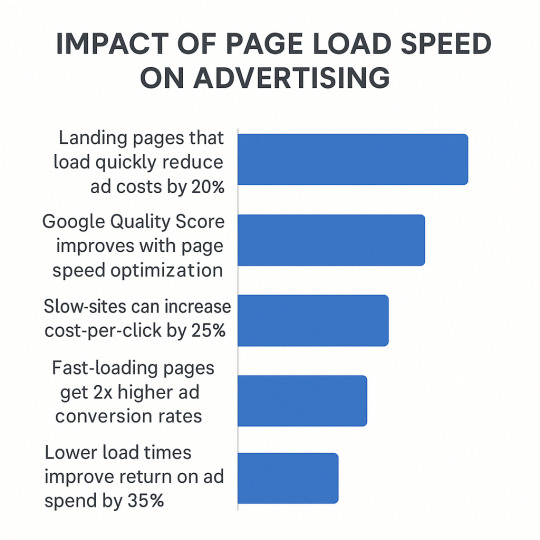
Additional Resources
Affordable Website Design: A Startup’s Guide to Building a Strong Online Presence
SEO for Local Businesses & Online Stores: The 2025 Playbook to Rank Higher
Voice Search Optimization: A Step-by-Step Guide for Your Website
Basic steps to protect your website from cyber attacks
Fixing Speed Issues Without Being a Developer
Improving website speed might sound like a job for your IT team or web developer—but the truth is, many of the most effective fixes are surprisingly simple. Whether you manage your own website or rely on someone else to maintain it, there are a few high-impact changes that almost any business can tackle.
Start with Hosting: Not All Plans Are Equal
Your website’s hosting provider has a huge influence on speed. Shared hosting plans, which are common for small businesses, often lead to slow response times—especially during peak traffic. Upgrading to a faster plan, or switching to a host that specializes in performance, can make a big difference instantly.
Optimize Your Images Without Losing Quality
Large images are one of the most common culprits behind slow load times. The fix? Compress your images before uploading them to your site. Tools like TinyPNG or built-in WordPress plugins can help reduce file sizes dramatically while keeping your photos looking sharp.
Simplify the Design Where It Matters
Not every site needs animations, sliders, and auto-playing videos. In fact, these extras often do more harm than good. By simplifying your layout—especially on mobile—you can reduce load times and make it easier for users to find what they need.
Cut the Clutter in the Background
Many websites are slowed down by plugins, scripts, or tracking codes that no one is actively using. Doing a cleanup—disabling or removing what’s unnecessary—can instantly speed things up. And if you’re using a platform like WordPress, fewer plugins usually mean better performance.
Work With Someone When It’s Time
You don’t need to be a developer to make your website faster—but partnering with someone who knows how to audit and optimize can take your improvements further. Whether it’s a one-time tune-up or part of a broader strategy, outside help can ensure nothing is overlooked.
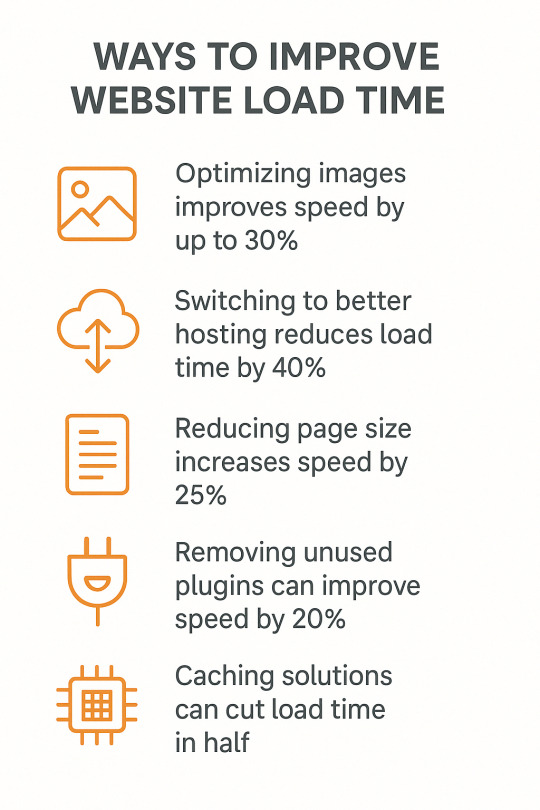
FAQs: Common Questions About Website Speed
1. What’s considered a “good” website speed for most businesses?
Ideally, your website should load in under two seconds. Anything beyond three seconds increases the risk of visitors bouncing. The faster your site loads, the better the user experience, especially on mobile. For most businesses, aiming for under two seconds on all devices is a realistic and effective benchmark.
2. How do I accurately test my website’s speed?
Tools like Google PageSpeed Insights, GTmetrix, and WebPageTest are great starting points. They show how fast your site loads, both on desktop and mobile, and what’s slowing it down. These tools also offer improvement suggestions, so you can begin making fixes without needing deep technical knowledge.
3. What are the most common factors that slow down a website?
Large images, unnecessary scripts, bloated themes, and slow hosting are among the top culprits. Plugins (especially on WordPress), third-party ads, or embedded videos can also drag down performance. Often, just removing what you’re not using—or optimizing what you are—can make a huge difference.
4. How does website speed affect my website’s conversion rate?
The longer your site takes to load, the fewer people will stick around to take action. Even a one-second delay can lead to a noticeable drop in sales, form submissions, or signups. Faster websites make users feel more confident, and that comfort translates into higher conversions.
5. Does website speed impact my search engine rankings (SEO)?
Yes. Google includes speed in its ranking factors, particularly through Core Web Vitals. A slow website can hurt your visibility even if your content is good. On the flip side, a fast site can boost your rankings, especially on mobile where load time is critical for user satisfaction.
6. How does slow website speed affect the user experience?
Users don’t just notice slow websites—they remember them. If a site lags or feels clunky, it reduces trust and makes it harder for people to engage with your content or buy from you. A fast site creates a smoother, more professional experience that encourages action.
7. What are the long-term benefits of improving website speed?
Speed improvements can lead to sustained growth in traffic, engagement, and conversions. They also reduce bounce rates, improve ad performance, and enhance SEO rankings. Over time, a faster website helps you do more with the same content and budget—making it one of the best ROI improvements you can make.
Conclusion: Why Speed Is a Silent Growth Lever
Website speed often gets overlooked—not because it’s unimportant, but because it works quietly in the background. It doesn’t scream for attention the way a flashy ad campaign does. But when it’s not right, everything else suffers. And when it’s working well, everything else performs better.
Speed impacts how users interact with your content, how often they return, and how search engines evaluate your site. It influences whether people convert, whether they trust your business, and whether your marketing dollars are working efficiently.
The takeaway? Improving your website speed isn’t just about shaving off seconds—it’s about setting your entire digital strategy up for better results. And the sooner you invest in speed, the sooner you start seeing the benefits ripple across your business.
“Bio:Maede is a content curator at UnlimitedExposure, a company dedicated to providing a wide range of digital marketing resources. Their expertly curated content helps both beginners and seasoned professionals stay ahead of industry trends. Whether you need beginner-friendly tutorials or in-depth analyses, UnlimitedExposure equips you with the knowledge to grow and succeed in today’s fast-paced digital world. Explore their collection to enhance your skills and stay competitive.
UnlimitedExposure Online is also recognized a Website Design Agency Toronto”
#Website Design Agency Toronto#website speed optimization#Site Performance#Page Speed Matters#website optimization
0 notes
Text
How to Optimize WordPress for Speed and Performance
Are you looking to learn how to optimize a WordPress website for speed and performance? A fast-loading website is crucial for user experience, SEO rankings, and overall website success. If your WordPress site is slow, visitors may leave before it loads, leading to higher bounce rates and lower conversions. This comprehensive guide will cover all the essential strategies for optimizing WordPress…
#Freshers Guide#Optimize#Optimize WordPress#Optimize WordPress for Performance#Optimize WordPress for Speed#Optimize WordPress for Speed and Performance#Optimize WordPress Site#Optimize WordPress Website#Performance#Speed#Website Speed & Performance#WordPress
0 notes
Text
Best Free Site Speed Performance Test Tools for 2025 | TweakBuzz

In today’s fast-paced digital world, site speed performance plays a crucial role in determining your website’s success. A slow-loading site not only drives visitors away but also hurts your search engine rankings. Google has officially confirmed that page speed is a ranking factor, which makes performance testing more important than ever. Whether you're a business owner, digital marketer, or web developer, using the best free site speed performance test tools in 2025 can help you stay ahead of the competition.
These tools analyze various elements such as page load time, Core Web Vitals, mobile responsiveness, server response, and script performance. From visual load metrics to waterfall charts and optimization tips, they give you a detailed breakdown of what’s slowing your website down. Some even simulate real-world performance from different locations and devices, which is essential if you have a global audience.
Popular options like Google PageSpeed Insights, GTmetrix, Pingdom Tools, WebPageTest, and Lighthouse are dominating in 2025 thanks to their accuracy and ease of use. These free tools not only identify speed issues but also offer actionable suggestions to improve site performance. Whether it's lazy-loading images, compressing files, reducing redirects, or optimizing your code, these tools help you fix problems before they impact your user experience.
If you're serious about improving your website’s SEO, engagement, and conversion rates, running a regular site speed performance test should be a priority. Using the best free tools available in 2025, you can ensure your site runs smoothly, loads fast, and ranks higher on Google — all without spending a dime.
0 notes
Text
Step-by-Step: Setting Up IndexNow on Your HTML Websites
Introduction For website owners running static HTML websites, getting new pages indexed quickly by search engines has always been a bit of a waiting game. But with IndexNow, you can now notify search engines instantly when you update or create content. This open-source protocol is supported by major search engines like Bing, Yandex, and others — with growing support across the industry. This…
#Bing IndexNow setup#boost search visibility#how to use IndexNow#HTML website SEO#improve indexing speed#IndexNow#IndexNow key setup#IndexNow tutorial#instant indexing#notify search engines#search engine indexing#SEO tips for HTML#static site SEO optimization#static website indexing#web performance tools
0 notes
Text
Improve Your Site Speed: Top Core Web Vitals Services in 2025
Site speed remains a critical SEO factor in 2025. To stay competitive, consider investing in a website speed optimization service focused on Core Web Vitals. These services identify and fix issues slowing your site, from slow-loading images to render-blocking scripts. The top providers in 2025 use advanced tools to ensure your site performs optimally on all devices. Improve user experience, lower bounce rates, and boost rankings with expert optimization.
#google core web vitals service#core web vitals service#core web vitals consulting#core web vitals optimization service#core web vitals audit#speed optimization services#website speed optimization service#site speed optimization service#improve website performance
1 note
·
View note
Text
First Contentful Paint (FCP) for Web Performance Optimization
Discover everything about First Contentful Paint (FCP) — what it is, why it matters, how to measure and optimize it, and the tools and best practices for improving web performance and user experience. First Contentful Paint (FCP) for Web Performance Optimization Mastering First Contentful Paint (FCP) for Web Performance Optimization In the dynamic landscape of web performance, few metrics are…
#core web vitals#FCP#FCP for mobile#FCP score#FCP tools#FCP vs LCP#First Contentful Paint#frontend performance#Google SEO#improve website loading time#loading performance#measure FCP#optimize FCP#page speed#performance metrics#render-blocking resources#site speed optimization#user experience#web performance#website performance
0 notes
Text
Smart SEO Audits & Insights for Better Rankings – WebsAudit
WebsAudit provides expert SEO audits, actionable insights, and powerful tools to optimize your website’s performance. Get real-time data on SEO errors, meta tags, redirects, alt tags, and more. Our user-friendly tools help boost search rankings and enhance website visibility. Whether you need a Google search preview, URL redirect checker, or image alt tags analyzer, WebsAudit has the right solution for you. Improve your SEO strategy effortlessly—start optimizing today!
#SEO Audit#Website Optimization#Technical SEO#Site Performance#Page Speed Analysis#SEO Best Practices#Content Audit#Backlink Analysis#Mobile Optimization#On-Page SEO#Keyword Analysis#Site Structure#Link Building#Search Engine Rankings#Website Health#Technical Issues
0 notes